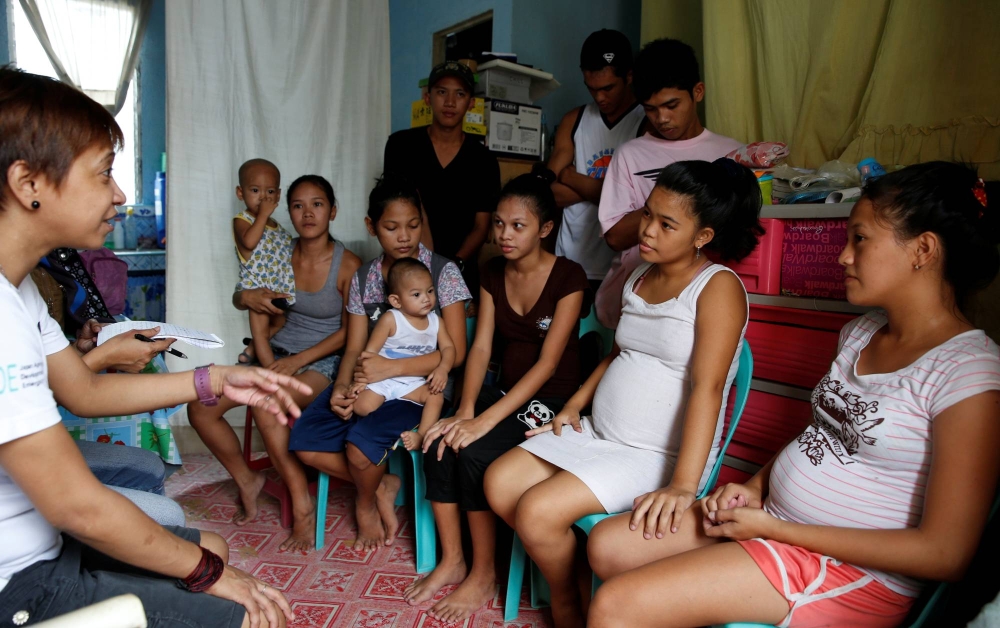Can new law help tackle Philippines’ teen pregnancy emergency?
Can new law help tackle Philippines' teen pregnancy emergency? The Japan Times


A New Bill to Combat Teen Pregnancies in the Philippines

MANILA –
A new bill that could be a game changer in the battle against teen pregnancies in the Philippines is inching through Congress with activists hoping it could galvanize a wider campaign to tackle this “national social emergency.”
The Adolescent Pregnancy Prevention Bill
The Adolescent Pregnancy Prevention Bill, which was passed by the House in September and has now moved to the Senate, aims to expand access to sexual and reproductive health services, like contraception, in a mainly Catholic country where early pregnancies, even among girls as young as 10, are rife and where the age of consent was only raised from 12 to 16 last year.
Advocacy for the Bill
The Philippine Legislators’ Committee on Population and Development, one of the groups campaigning for the bill, said it was only two steps away from a vote in the Senate.
SDGs, Targets, and Indicators
-
SDG 3: Good Health and Well-being
- Target 3.7: By 2030, ensure universal access to sexual and reproductive health-care services, including for family planning, information and education, and the integration of reproductive health into national strategies and programs.
- Indicator 3.7.1: Proportion of women of reproductive age (aged 15-49 years) who have their need for family planning satisfied with modern methods.
-
SDG 5: Gender Equality
- Target 5.6: Ensure universal access to sexual and reproductive health and reproductive rights as agreed in accordance with the Program of Action of the International Conference on Population and Development and the Beijing Platform for Action and the outcome documents of their review conferences.
- Indicator 5.6.1: Proportion of women aged 15-49 years who make their own informed decisions regarding sexual relations, contraceptive use, and reproductive health care.
-
SDG 10: Reduced Inequalities
- Target 10.2: By 2030, empower and promote the social, economic, and political inclusion of all, irrespective of age, sex, disability, race, ethnicity, origin, religion, or economic or other status.
- Indicator 10.2.1: Proportion of people living below 50 percent of median income, by age, sex, and persons with disabilities.
Analysis
1. Which SDGs are addressed or connected to the issues highlighted in the article?
The issues highlighted in the article are connected to SDG 3: Good Health and Well-being, SDG 5: Gender Equality, and SDG 10: Reduced Inequalities.
2. What specific targets under those SDGs can be identified based on the article’s content?
Based on the article’s content, the specific targets that can be identified are:
– Target 3.7: By 2030, ensure universal access to sexual and reproductive health-care services, including for family planning, information and education, and the integration of reproductive health into national strategies and programs.
– Target 5.6: Ensure universal access to sexual and reproductive health and reproductive rights as agreed in accordance with the Program of Action of the International Conference on Population and Development and the Beijing Platform for Action and the outcome documents of their review conferences.
– Target 10.2: By 2030, empower and promote the social, economic, and political inclusion of all, irrespective of age, sex, disability, race, ethnicity, origin, religion, or economic or other status.
3. Are there any indicators mentioned or implied in the article that can be used to measure progress towards the identified targets?
The article mentions two indicators that can be used to measure progress towards the identified targets:
– Indicator 3.7.1: Proportion of women of reproductive age (aged 15-49 years) who have their need for family planning satisfied with modern methods.
– Indicator 5.6.1: Proportion of women aged 15-49 years who make their own informed decisions regarding sexual relations, contraceptive use, and reproductive health care.
Table: SDGs, Targets, and Indicators
| SDGs | Targets | Indicators |
|---|---|---|
| SDG 3: Good Health and Well-being | Target 3.7: By 2030, ensure universal access to sexual and reproductive health-care services, including for family planning, information and education, and the integration of reproductive health into national strategies and programs. | Indicator 3.7.1: Proportion of women of reproductive age (aged 15-49 years) who have their need for family planning satisfied with modern methods. |
| SDG 5: Gender Equality | Target 5.6: Ensure universal access to sexual and reproductive health and reproductive rights as agreed in accordance with the Program of Action of the International Conference on Population and Development and the Beijing Platform for Action and the outcome documents of their review conferences. | Indicator 5.6.1: Proportion of women aged 15-49 years who make their own informed decisions regarding sexual relations, contraceptive use, and reproductive health care. |
| SDG 10: Reduced Inequalities | Target 10.2: By 2030, empower and promote the social, economic, and political inclusion of all, irrespective of age, sex, disability, race, ethnicity, origin, religion, or economic or other status. | Indicator 10.2.1: Proportion of people living below 50 percent of median income, by age, sex, and persons with disabilities. |
Behold! This splendid article springs forth from the wellspring of knowledge, shaped by a wondrous proprietary AI technology that delved into a vast ocean of data, illuminating the path towards the Sustainable Development Goals. Remember that all rights are reserved by SDG Investors LLC, empowering us to champion progress together.
Source: japantimes.co.jp

Join us, as fellow seekers of change, on a transformative journey at https://sdgtalks.ai/welcome, where you can become a member and actively contribute to shaping a brighter future.







